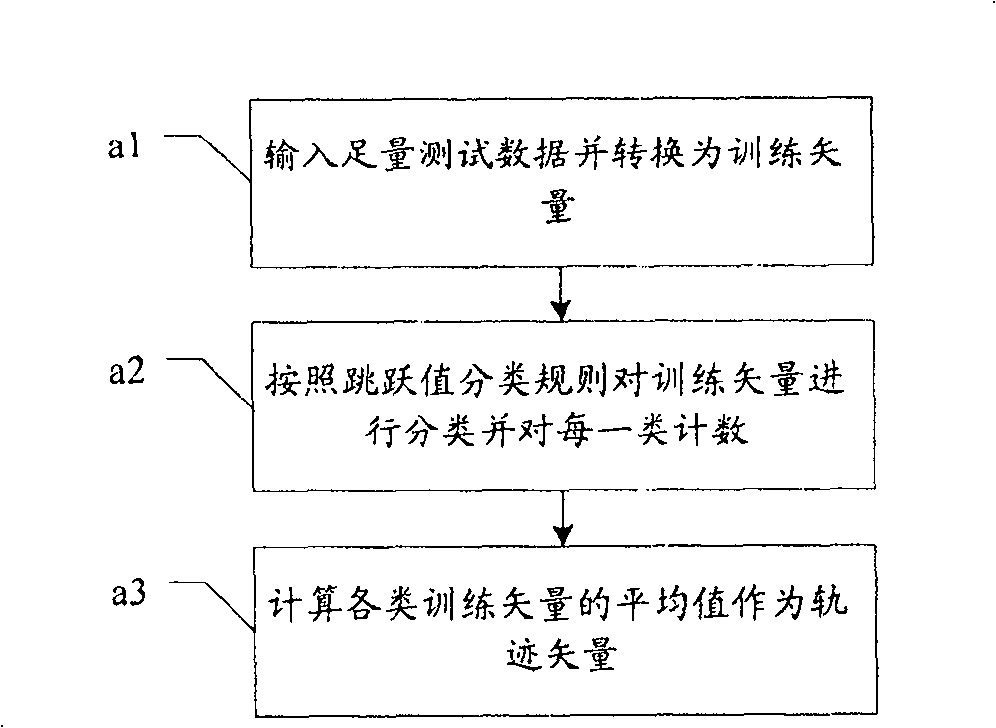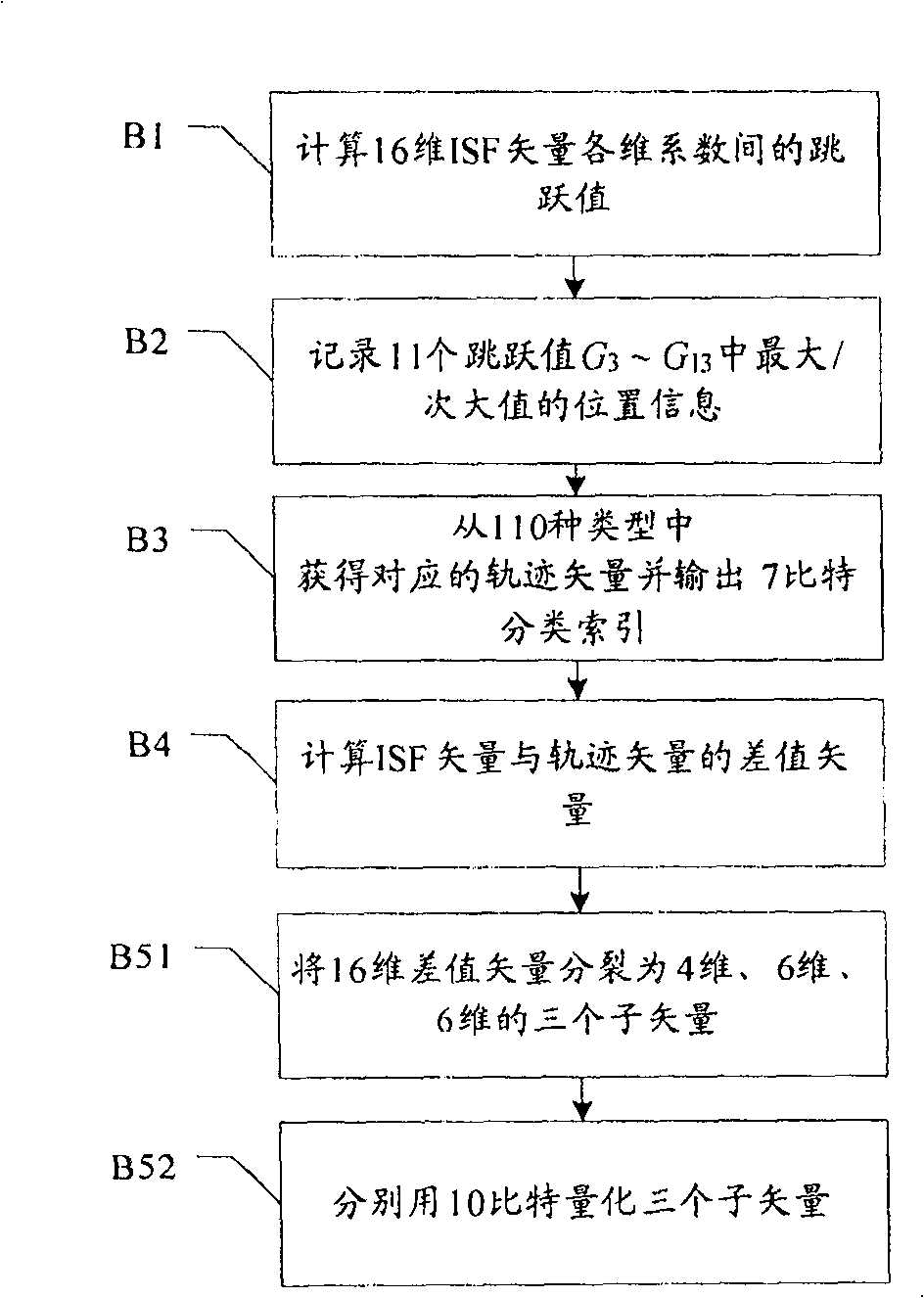A vector quantification method and vector quantifier
A vector quantization and vector technology, applied in the field of vector quantization methods and vector quantizers, can solve the problems of large codebook capacity, multiple quantization bits, and cost
- Summary
- Abstract
- Description
- Claims
- Application Information
AI Technical Summary
Problems solved by technology
Method used
Image
Examples
Embodiment 1
[0077] Embodiment 1, a vector quantization method, the process is as follows figure 1 shown, including steps:
[0078] A1. Classify the vector to be quantized according to the distribution of jump values between its dimension coefficients, obtain the trajectory vector corresponding to the classification and output the classification index;
[0079] The jump value between the vector dimension coefficients can reflect the change trend of the vector, and the distribution of the jump value shows the shape change of the vector. Generally speaking, the extreme value in the jump value has the most obvious influence on the shape, so in this embodiment, the maximum value and the second maximum value in the jump value are selected as the research object of the distribution, and the quantized vector is classified according to the position where it appears. The specific method is:
[0080] A11, calculate the jump value;
[0081] If the vector to be quantized is an n-dimensional vecto...
Embodiment 2
[0099] Embodiment 2, a vector quantization method, the process is as follows image 3 As shown, the main improvement of this embodiment compared with Embodiment 1 is that only the part of the jump value that plays a major role is considered in the classification, and the split quantization method is used when the difference vector is quantized; it includes steps:
[0100] B1. Calculate the vector to be quantized, that is, the 16-dimensional ISF vector f t =[f 0 , f 1 ,..., f 15 ], the jump value G between the coefficients of each dimension i :
[0101] G i = f i+1 -f i , i=0,1,...,14
[0102] There are 15 jump values in total; the experimental analysis of the ISF coefficients in the frame found that there is a certain correlation between the ISF coefficients. 14 The value of is a negative number, in order to reduce the computational complexity, and it is proved by experiments that G 3 ~G 13 A total of 11 skip values are good for classification, so only G is used...
Embodiment 3
[0116] Embodiment three, a vector quantization method, this embodiment is basically the same as embodiment two, the difference is:
[0117] 1. Use G when classifying 1 ~G 14 A total of 14 jump values are used to classify ISF vectors; G 1 ~G 14 The maximum value M in max and the next largest value M max-1 There are 14×13=182 permutations and combinations in total, so the corresponding trajectory vectors are divided into 182 types, and the classification index needs to occupy 8 quantization bits;
[0118] 2. When quantizing the difference vector, the dimensions of the three split sub-vectors are: VQ1 is 5 dimensions, VQ2 is 5 dimensions, and VQ3 is 6 dimensions; each sub-vector is still quantized with 10 bits, and the entire quantization scheme A total of 38 bits are required.
[0119] Compared with the second embodiment, the classification in this embodiment is more detailed, and the accuracy of quantification is improved.
PUM
 Login to View More
Login to View More Abstract
Description
Claims
Application Information
 Login to View More
Login to View More - R&D
- Intellectual Property
- Life Sciences
- Materials
- Tech Scout
- Unparalleled Data Quality
- Higher Quality Content
- 60% Fewer Hallucinations
Browse by: Latest US Patents, China's latest patents, Technical Efficacy Thesaurus, Application Domain, Technology Topic, Popular Technical Reports.
© 2025 PatSnap. All rights reserved.Legal|Privacy policy|Modern Slavery Act Transparency Statement|Sitemap|About US| Contact US: help@patsnap.com



